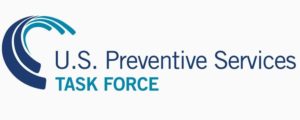WASHINGTON, DC – May 9, 2023 – On May 9th, the United States Preventive Services Task Force (USPSTF) issued new recommendations for women to be screened for breast cancer every other year starting at age 40 rather than at 50. The recommendations had last been revised in 2016. The current guidelines recommend that women between ages 40 and 50 discuss earlier screening with their doctor if they feel that they are at a higher breast cancer risk. The USPSTF is a national group of experts that sets the standards for preventive tests and screenings. Their new recommendations are for women at average risk for developing breast cancer. Cancer is harder to identify on a screening mammogram of dense breast tissue so some women may require an ultrasound or an MRI as the screening test. If the screening mammogram is positive, then the next step would be an advanced imaging study like an ultrasound or an MRI followed by a surgical biopsy for positive findings. A risk analysis is performed earlier than the recommended starting age for screening tests so that higher risk women can be screened earlier.
Many health organizations have had different breast cancer screening recommendations based upon their group’s evaluation of the benefits versus the drawbacks of early screening. The benefits include saving more lives with an earlier diagnosis before the cancer becomes harder to treat. The drawbacks are an unnecessary surgical biopsy and mental anguish after a false positive mammogram. The American College of Radiology prefers an annual screening for women at average risk to begin at age 40. The American Cancer Society feels that women should get mammograms yearly from 45 to 54 and then at age 55 change over to every other year; although women can choose to start yearly mammograms at age 40.
Breast cancer is the 2nd-leading cause of cancer deaths in U.S. women, behind lung cancer. 1 out of 8 women develop breast cancer during their lifetime. Almost 30% of all new cancers in U.S. women, equal to 300 thousand cases a year, are from breast cancer.
Reducing health disparities through evidence-based screening and treatment is currently being evaluated. Although the median age for the diagnosis of breast cancer is 62, it varies according to racial group. Black women are 40% more likely to die from breast cancer, have a younger median age of diagnosis, and have a more aggressive type of cancer than white women. A diagnosis under age 50 is associated with having a more aggressive cancer. Therefore, preventive tests at an earlier age can identify a higher percentage of more severe cancers.
Women are at a higher risk for breast cancer if any of the following factors are present:
- Dense breast tissue of a more fibrous nature than fatty tissue. Almost one-half of women have dense breast tissue.
- A positive family history of first-degree relatives or multiple relatives having either breast or ovarian cancers.
- Increasing age
- Genetic predisposition through mutation or inherited genes
- Prior history of breast cancer
The Task Force will decide whether to go ahead with the new screening guidelines after public comment ends on June 5th.
Listen to the full report below:
Contact: Dr. Dick Needleman, Health reporter, 103.3 AshevilleFM, [email protected]
More Posts for Show: Asheville FM News Hour
